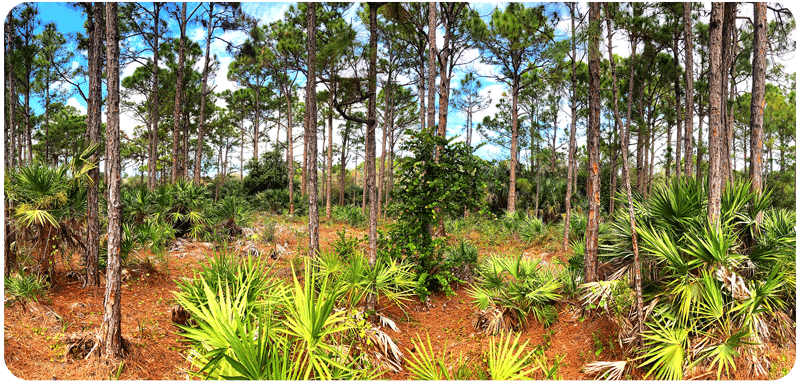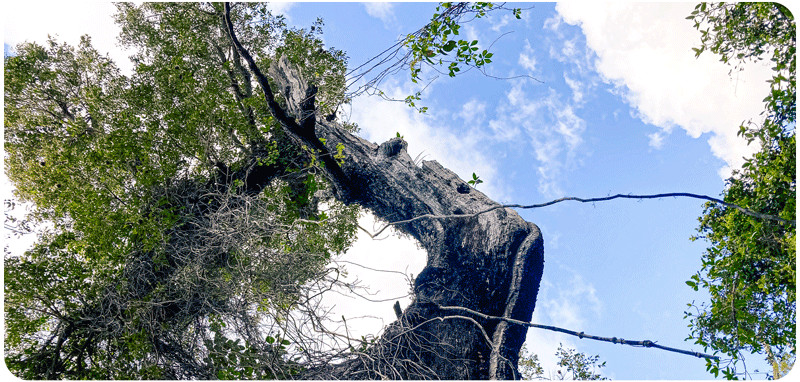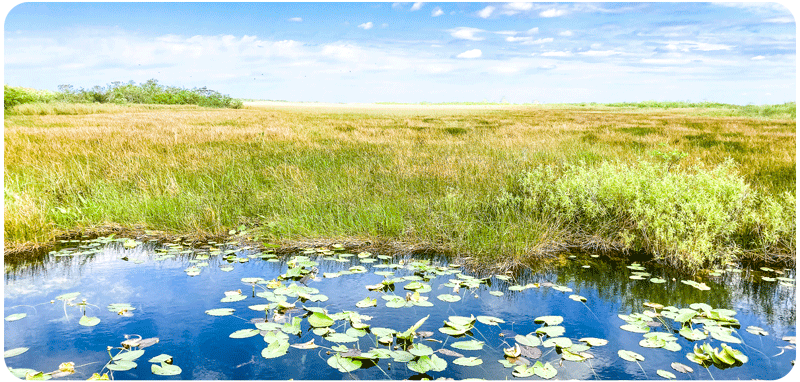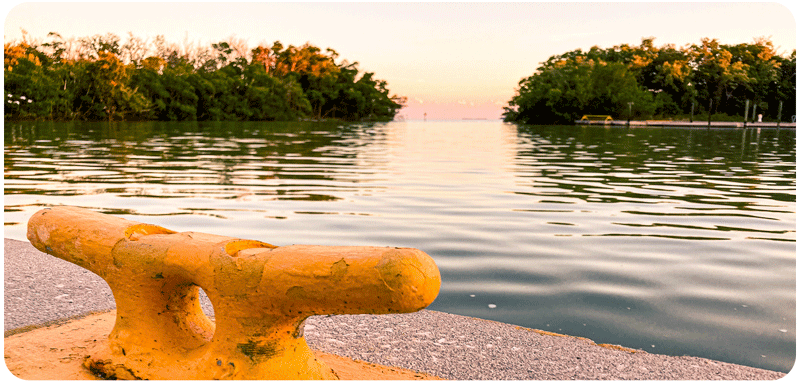The Everglades Watershed: A Rich & Diverse Ecosystem
by Nick Hammond on Jul 13, 2022
Historically, the Everglades Watershed covered well over 10,000 square miles of South Florida.
Despite major habitat loss from human development and natural disasters, the Everglades supports over 2000 groups of organisms including 1033 plant taxa, 60 reptile taxa, 76 mammal taxa, 432 fish taxa, 349 bird taxa and 38 amphibian taxa.
Today we're taking a deeper look at 6 different habitats these species call home.
"There are no other Everglades in the world. They are, they have always been, one of the unique regions of the earth; remote, never wholly known. Nothing anywhere else is like them."
- Marjory Stoneman Douglas / Journalist, Author, and Conservationist

1. Pine Flatwoods

2. Scrub Habitat

3. Hardwood Hammocks

4. Cypress Domes

5. Wetlands/Floodplains
These ecosystems hold valuable water during the dry season and collect excess water in the wet season, preventing flooding. The flow of water through wetland habitat is what keeps our water clean and our ecosystem healthy.

6. Mangrove Estuary
Through our Buy One, Plant One® initiative we're working to replant and restore mangrove ecosystems not just here in Florida but across the globe. Learn more about our planting efforts as we work to change the world, by heading over to Our Mission page.






